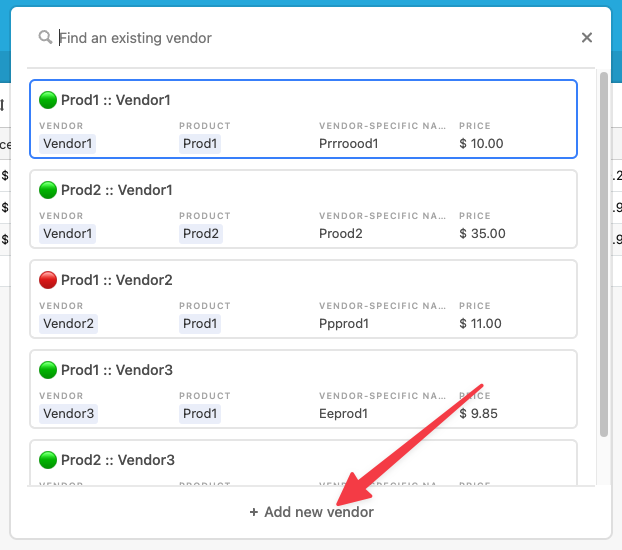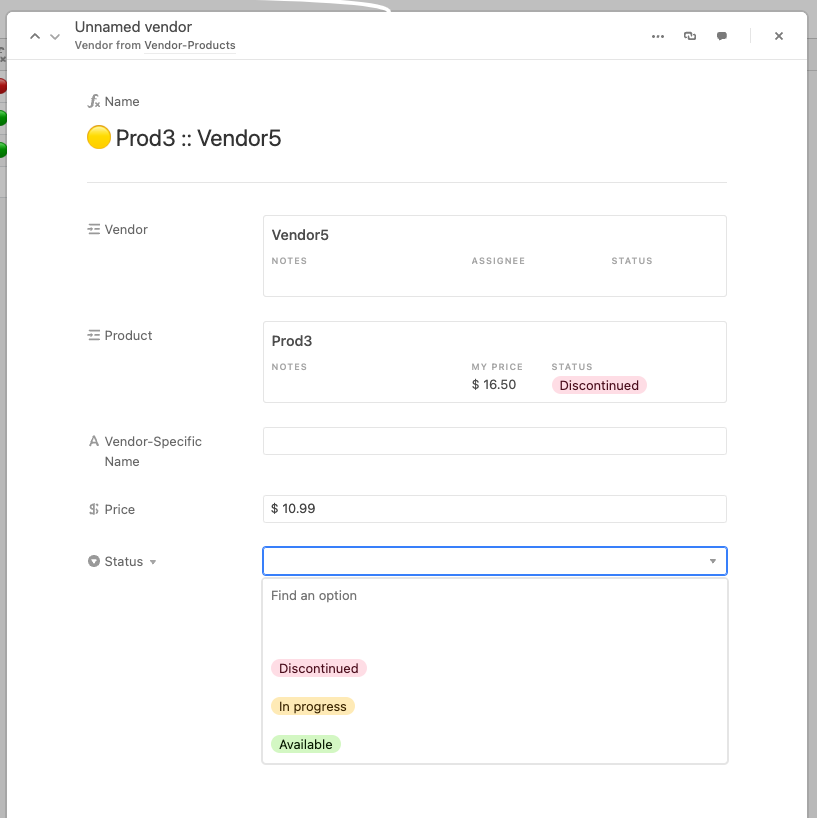Thank you in advance! I’m new to Airtable and have watched several tutorials and still I’m stumped. Here is the situation I have is a base with 8 Tables. Table 1 is the master list of products I sell. This table has fields with my product name, and number, etc. The other 7 tables are vendors where I can buy the products. Each vendor has a different name and price for the product. The first 5 fields on every table is the name of my product. The goal is to be able to move from Vendor A to Vendor B and so on and see my name and color of item and compare it to the Vendors product name. What I want to do is have the first 5 fields on table 1 linked to the other 7 tables. The goal is when I discontinue an item on my product list (table 1) and change the status to discontinued then the status changes on all the other vendor tables. Or if a vendor discontinues a product, I can change the status on the vendors table, and it will change on all other tables.
I hope this makes sense, and I really appreciate the assistance.






